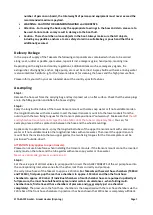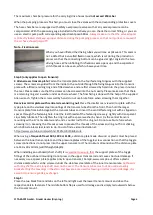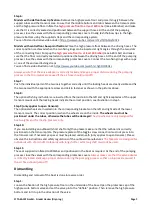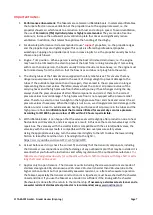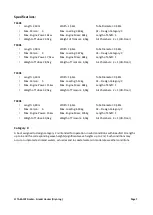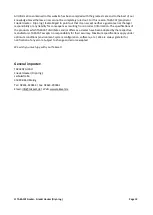
© TAKACAT GmbH - Friedel Hacker (Dipl.-Ing.)
Page
2
Introduction:
This manual has been compiled to enable you to operate your boat safely and with pleasure. It contains
details about the vessel itself, the accessories supplied or installed and its equipment, as well as
information about its operation. Please read it carefully and familiarise yourself with the vessel before
using it.
This boatmaster's manual is not a course in boat safety or seamanship. If this is your first vessel or if you
have changed to a type of vessel you are not familiar with, for your own safety and convenience, please
ensure that you acquire knowledge of the handling and operation of the vessel before taking command.
Your dealer or the national sailing or powerboat association or yacht club will be happy to advise you about
local yacht schools or recommend experienced instructors.
Make sure that the expected wind and sea conditions are in accordance with the design category of your
vessel and that you and your crew are able to handle the vessel under these conditions. Please refer to
"Specifications" at the end of this manual for the design category of the corresponding models.
This manual is not a detailed maintenance or troubleshooting guide. If you encounter any difficulties,
please contact the boat builder or his representative. If a maintenance manual is provided, use it for
maintenance of the boat.
Only use trained and competent personnel for maintenance, repairs or modifications. Changes that may
affect the safety characteristics of the vessel must be assessed, carried out and recorded by specialists. The
boat builder cannot be held responsible for any changes that he has not agreed to.
Some countries require a driving licence or authorisation or have special regulations.
Always maintain your watercraft properly and take into account the wear and tear that occurs over time
and through frequent use or improper use of the watercraft.
Any watercraft, regardless of how strong it is built, can suffer serious damage through improper handling.
This is not compatible with safe boat handling. Always adjust the speed and direction of the watercraft to
the sea conditions.
If your vessel is equipped with a life raft, read its operating instructions carefully. The vessel should be
equipped with the appropriate safety equipment (life jackets, safety belts, etc.) according to the type of
vessel, weather conditions, etc. This equipment is compulsory in some countries. The crew should be
familiar with the use of all safety equipment and manoeuvring in emergency situations (man overboard
recovery, mooring, etc.). Sailing schools and clubs regularly organise training courses.
All persons should wear a portable buoyancy aid (life jacket/personal buoyancy aid) when on deck. It
should be noted that in some countries there are legal requirements that require that a buoyancy aid be
worn at all times in accordance with national regulations.
PLEASE KEEP THIS MANUAL IN A SAFE PLACE AND GIVE IT TO THE NEW OWNER WHEN YOU SELL
THE BOAT.
•
WARNING - When loading the vessel, never exceed the maximum recommended payload.
Loading must always be carried out with care, distributing loads appropriately to maintain design
trim. Heavy loads must be placed as low as possible.
•
WARNING - Do not exceed the maximum recommended number of people. Regardless of the



